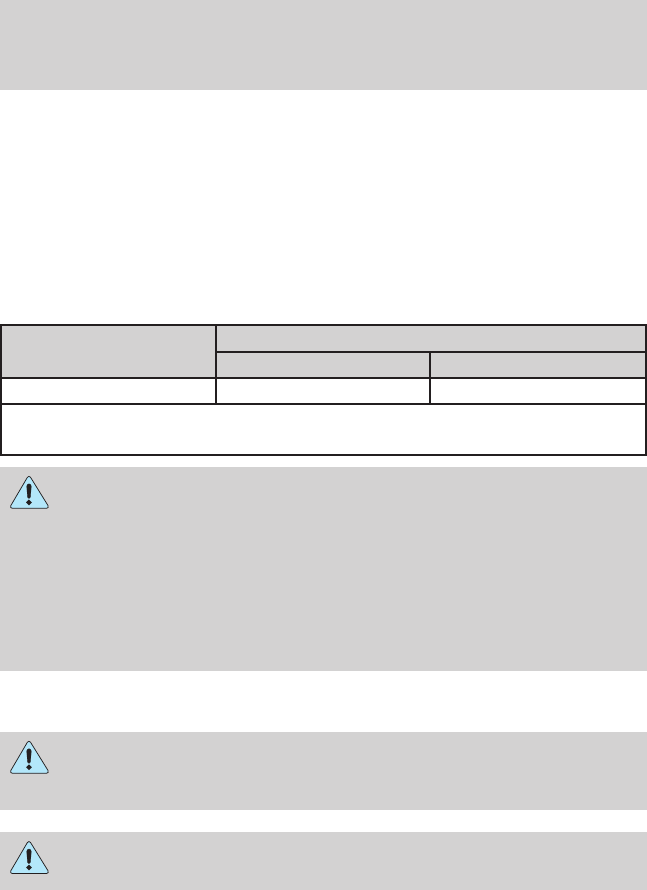Owner's Manual
Table Of Contents
- Table of Contents
- Introduction
- Instrument Cluster
- Entertainment Systems
- Climate Controls
- Lights
- Driver Controls
- MULTI-FUNCTION LEVER
- TILT STEERING WHEEL
- ILLUMINATED VISOR MIRROR (IF EQUIPPED)
- OVERHEAD CONSOLE (IF EQUIPPED)
- CENTER CONSOLE
- AUXILIARY POWER POINT (12VDC)
- POWER WINDOWS
- AUTOMATIC DIMMING REAR VIEW MIRROR (IF EQUIPPED)
- EXTERIOR MIRRORS
- SPEED CONTROL
- MOON ROOF (IF EQUIPPED)
- MESSAGE CENTER (IF EQUIPPED)
- LIFTGATE
- CARGO SHADE (IF EQUIPPED)
- LUGGAGE RACK (IF EQUIPPED)
- Locks and Security
- Seating and Safety Restraints
- FRONT SEATS
- REAR SEATS
- SAFETY RESTRAINTS
- Personal Safety System
- How does the Personal Safety System work?
- Driver and passenger dual-stage airbag supplemental restraints
- Front crash severity sensor
- Driver’s seat position sensor
- Front passenger sensing system
- Front safety belt usage sensors
- Front safety belt pretensioners
- Front safety belt energy management retractors
- Determining if the Personal Safety System is operational
- Safety restraints precautions
- Combination lap and shoulder belts
- Energy Management Feature
- Vehicle sensitive mode
- Automatic locking mode
- Safety belt height adjustment
- Safety belt pretensioner
- Safety belt extension assembly
- Safety belt maintenance
- Safety belt warning light and indicator chime
- BeltMinder
- Personal Safety System
- AIRBAG SUPPLEMENTAL RESTRAINT SYSTEM (SRS)
- Important SRS precautions
- Children and airbags
- How does the airbag supplemental restraint system work?
- Front passenger sensing system
- Determining if the system is operational
- Seat-mounted side airbag system (if equipped)
- Safety Canopy system (if equipped)
- Disposal of airbags and airbag equipped vehicles (including pretensioners)
- SAFETY RESTRAINTS FOR CHILDREN
- SAFETY SEATS FOR CHILDREN
- Tires, Wheels and Loading
- NOTICE TO UTILITY VEHICLE AND TRUCK OWNERS
- VEHICLE CHARACTERISTICS
- INFORMATION ABOUT UNIFORM TIRE QUALITY GRADING
- TIRES
- INFLATING YOUR TIRES
- TIRE CARE
- INFORMATION CONTAINED ON THE TIRE SIDEWALL
- TIRE PRESSURE MONITORING SYSTEM (TPMS)
- SNOW TIRES AND CHAINS
- VEHICLE LOADING – WITH AND WITHOUT A TRAILER
- TRAILER TOWING
- RECREATIONAL TOWING
- Driving
- STARTING
- ENGINE BLOCK HEATER (IF EQUIPPED)
- BRAKES
- STEERING
- PREPARING TO DRIVE
- AUTOMATIC TRANSMISSION OPERATION
- REVERSE SENSING SYSTEM (IF EQUIPPED)
- FOUR WHEEL DRIVE (4WD) SYSTEM (IF EQUIPPED)
- DRIVING THROUGH WATER
- Roadside Emergencies
- Customer Assistance
- GETTING THE SERVICES YOU NEED
- IN CALIFORNIA (U.S. ONLY)
- THE BETTER BUSINESS BUREAU (BBB) AUTO LINE PROGRAM (U.S. ONLY)
- UTILIZING THE MEDIATION/ARBITRATION PROGRAM (CANADA ONLY)
- FORD EXTENDED SERVICE PLAN
- GETTING ASSISTANCE OUTSIDE THE U.S. AND CANADA
- ORDERING ADDITIONAL OWNER’S LITERATURE
- REPORTING SAFETY DEFECTS (U.S. ONLY)
- REPORTING SAFETY DEFECTS (CANADA ONLY)
- Cleaning
- Maintenance and Specifications
- SERVICE RECOMMENDATIONS
- PRECAUTIONS WHEN SERVICING YOUR VEHICLE
- OPENING THE HOOD
- IDENTIFYING COMPONENTS IN THE ENGINE COMPARTMENT
- WINDSHIELD WASHER FLUID
- CHANGING THE WIPER BLADES
- ENGINE OIL
- BATTERY
- ENGINE COOLANT
- FUEL FILTER
- WHAT YOU SHOULD KNOW ABOUT AUTOMOTIVE FUELS
- ESSENTIALS OF GOOD FUEL ECONOMY
- EMISSION CONTROL SYSTEM
- POWER STEERING FLUID
- BRAKE FLUID
- TRANSMISSION FLUID
- AIR FILTER
- MOTORCRAFT PART NUMBERS
- MAINTENANCE PRODUCT SPECIFICATIONS AND CAPACITIES
- ENGINE DATA
- IDENTIFYING YOUR VEHICLE
- TRANSMISSION/TRANSAXLE CODE DESIGNATIONS
- Accessories
- Index

7. Repeat this tightness check procedure (every six months, per
scheduled maintenance information), when servicing the spare tire
pressure or at any time that the spare tire is disturbed through service of
other components.
WHEEL LUG NUT TORQUE SPECIFICATIONS
Retighten the lug nuts to the specified torque at 500 miles (800 km)
after any wheel disturbance (tire rotation, changing a flat tire, wheel
removal, etc.).
Bolt size Wheel lug nut torque*
lb.ft. N•m
M12 x 1.5 100 135
* Torque specifications are for nut and bolt threads free of dirt and
rust. Use only Ford recommended replacement fasteners.
When a wheel is installed, always remove any corrosion, dirt or
foreign materials present on the mounting surfaces of the wheel
or the surface of the wheel hub, brake drum or brake disc that
contacts the wheel. Ensure that any fasteners that attach the rotor to
the hub are secured so they do not interfere with the mounting
surfaces of the wheel. Installing wheels without correct metal-to-metal
contact at the wheel mounting surfaces can cause the wheel nuts to
loosen and the wheel to come off while the vehicle is in motion,
resulting in loss of control.
JUMP STARTING
The gases around the battery can explode if exposed to flames,
sparks, or lit cigarettes. An explosion could result in injury or
vehicle damage.
Batteries contain sulfuric acid which can burn skin, eyes and
clothing, if contacted.
Do not attempt to push-start your automatic transmission
vehicle. Automatic transmissions do not have push-start
capability. Attempting to push-start a vehicle with an automatic
transmission may cause transmission damage.
2007 Mariner (mrn)
Owners Guide (post-2002-fmt)
USA (fus)
Roadside Emergencies
207










